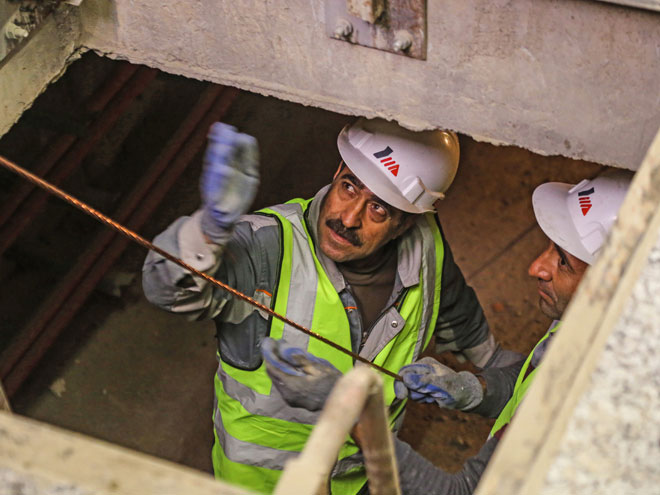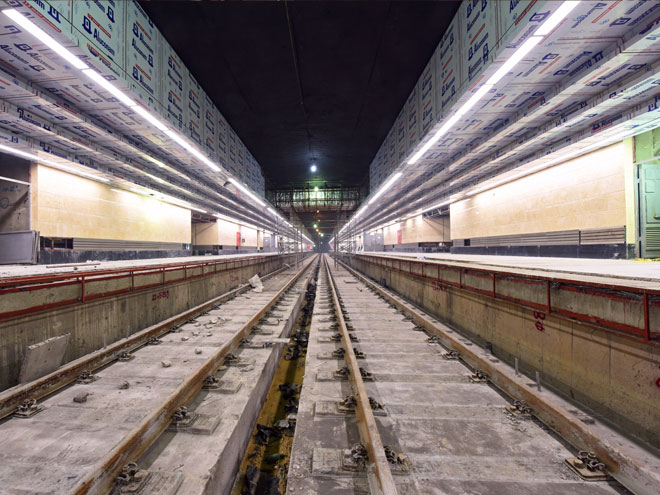Features
Tehran Metro Line 6, Longest Subway Route in Middle East
Metro systems have been significantly developed in recent years, providing viable solutions to traffic congestion and air pollution in cities with large populations.
It is almost impossible to imagine Tehran without a metro system today. The Tehran Metro could be called an underground city, which has become an irreplaceable part of the sprawling city.
MAPNA entered urban rail transit sector after winning the tenders for Mashhad subway project in 2008 and Qom monorail project a year later. In 2009, MAPNA Group was awarded 52% of the EPC contract for the Qom City Monorail, the first monorail in Iran; the project kicked off in early 2010, marking MAPNA’s first operation in the urban rail transportation. Then came the participation in the development of Isfahan Metro Line 1 project worth 62 million euros. The expertise of MAPNA in delivering engineering, managerial and financing services in these projects helped it win the Tehran Metro tenders, resulting in the signing of the contract for Line 6 project in early 2017.


Once fully operational, Tehran Metro Line 6 will give the capital’s subway system the longest route in Iran. The line will stretch over 31 kilometers with 27 stations, starting from Sulqan in the northwest and ending in Dolat-Abad district in the southeast. In further stages, Line 6 will expand to Shah Abdol-Azim Shrine in the ancient district of Rey to the south of the city, becoming the longest subway route in the Middle East with 36 kilometers of length.
Tehran Metro Line 6 has two important features: first, it equips the southeastern areas of Tehran as well as the districts 2 and 5 in the west and northwest, which are the most populous areas of the city, with modern transportation system; second, Line 6 intersects with all other Tehran Metro lines. The megaproject is jointly underway by MAPNA Group, Shahr Bank and Sabir Dam & Water Works Construction Company.
A MAPNA Group consortium won the tender for Tehran Metro Line 6 in early 2017. The scope of the project includes design, engineering, procurement and manufacturing of main equipment and spare parts, transportation, installation, test and commissioning, preparation of engineering documents, and personnel training for operation.
Rail projects, in general, comprise civil engineering and the acquisition of electrical and mechanical (E&M) equipment. Civil engineering includes everything that comes before rail laying, such as tunnels, stations, shafts, and stairs. E&M includes both electrical and mechanical features, as well as all procedures that result in wagons rolling along the rails.
The Tehran Metro Line 6 marks MAPNA Group’s first move in the subway civil engineering. The Group is currently working on the Ibn Baboye station (A6-2). MAPNA has previously worked on subway E&M projects, including the development of electric and control systems.


The first phase of Line 6, stretching nine kilometers with 3 stations, opened in March 2019 and three more stations joined the line in October 2020. Efforts have been made by the Central Bank of Iran, Tehran Municipality, and the government, to accelerate the complete implementation of the project.
Line 6 project progress looks promising since the whole route has been constructed and six stations at the southern tail of the Line are currently operational. The second phase of the project, which includes six stations from Tarbiat Modarres to Sattari stations, will be launched by March 2022, and in the long run, the third phase will put all the remaining stations into operation.
Once operational, Line 6, linking up with all other Tehran Metro lines, will reduce the travel time from southeastern parts of the capital to the northwest to 45 minutes. Currently, traveling the between the same points via public transportation takes more than two hours.
The high-speed tunneling project of Tehran Metro Line 6 won the Tunneling and Underground Space Association’s Tunneling Awards in 2017 in the category of ‘major project of the year’. Line 6 is the most compatible rail project in the country in terms of high security systems; it also offers a distinctive quality of urban public transportation.
MAPNA’s entrance to the urban rail projects was a turning point in the country’s industrial development in terms of indigenization. Currently, about 80% of subway equipment is developed and acquired domestically, and even the test trials are conducted inside the country. For instance, before MAPNA’s participation in Tehran Metro Line 3 project, all subway transformers were supplied from foreign markets, but today these equipment, especially light transformers, are all built inside and by domestic companies partnering MAPNA Group. The monitoring and SCADA Systems for Line 6 are also supplied by MAPNA subsidiaries. Therefore, the Metro Line 6 project has gained a momentum, not only in terms civil engineering, but also to for broadening the country’s horizons and reducing capital flight.
Success in urban rail transportation projects has helped MAPNA Group undertake similar projects in other cities. MAPNA has recently won a tender for the development of the subway project in Golbahar – a satellite city in Isfahan. The Group is also reviewing the Kerman Tramway project. MAPNA’s outlook for the rail transportation is closely tied to improving the quality of urban life. By participating in all urban subway projects, the Group hopes to help design a brighter future for Iran’s megacities, one in which urban transportation security is ensured, fossil fuel consumption is reduced, and urban pollution is decreased. MAPNA Group also holds bigger goals, intending to become one of the region’s leading rail enterprises by participating in international bids in the Middle East and East Asia.